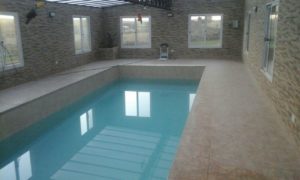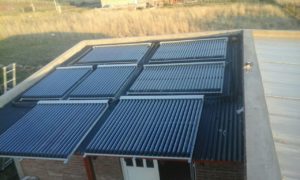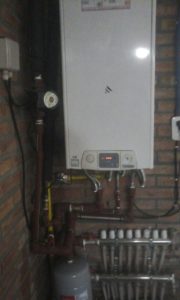Hydraulics is the physics field that studies fluid mechanics and is divided into Hydrostatic (liquids at rest) and hydrodynamics (liquid in motion).
density of a body d is called the mass m and volume V ratio:
d = m / V
specific gravity pe is the weight (= m g.) and volume ratio:
pe = m. g / V
Fluids (liquids and gases) always exert a pressure pr in all directions.
The pressure is the quotient between a force f (the exerted by the fluid) and the surface area S acted upon by this force:
pr = f / S
The pressure unit in the SI is the Newton divided by m2 (N / m2) and is called pascal.
Pressure exerted by gravity and the forces tending to compress the fluid is called static pressure.
The pressure resulting from movement of a fluid is called dynamic pressure.
Knowing the density or specific gravity of a fluid we can find the static pressure due to gravity at any depth h from either of the following two formulas:
pr = d. g. h
pr = pe. h

The pressure difference is equal to the depths difference h between 2 points or vertical distance between them.
A typical static pressure, is the atmospheric pressure produced in all directions on the bodies placed on earth surface due to the large air column above them. The result of this all directions atmospheric pressure action produces no net force pushing the body to one side, tends to compress it.
In the case of a container, the atmospheric pressure acts inside and outside and therefore their actions cancel each other.
We are interested in knowing the excess pressure above atmospheric pressure that may be inside the container (tanks or pipes) through measuring devices (manometers).
If air can freely enter and leave a container through the edge of the lid, the liquid surface will only be subjected to atmospheric pressure. It is an open or non pressurized reservoir.
If we measured pressure at different heights in the tank with a manometer it will be equal to zero at the surface and maximum at the bottom.
If the container is now sealed and subjected to additional pressure p, transmitted through the pipes that communicate with distribution circuit; the measurement is equal to the previous one but increased in the value of p. Usually the small pressure difference caused by the height difference is negligible compared to the overall circuit pressure p.
Archimedes’s theorem allows us to know a body weight when it is immersed in a liquid.
This theorem can be applied to a same liquid portion.
Suppose that a liquid portion suffer a slight temperature increase relative to other liquid parts.
Bodies expand by its temperature increasing and when increasing its volume density decreases as mass remains unchanged.
If d1 is the new density of the portion considered (d1 < d):
Weight of the liquid portion: p = m. g = V1. d1. g
Thrust acting on the liquid portion: E = V1. d. g
Where V1 is the volume of the liquid portion

These are the called fluids natural convection currents, in which hot parts tend to rise. Natural circulation or thermosyphon systems are based on this phenomenon for supplying hot water by solar collectors.
This content is part of “Solar Energy Introduction” eBook and solar e-learning of Sopelia.

















